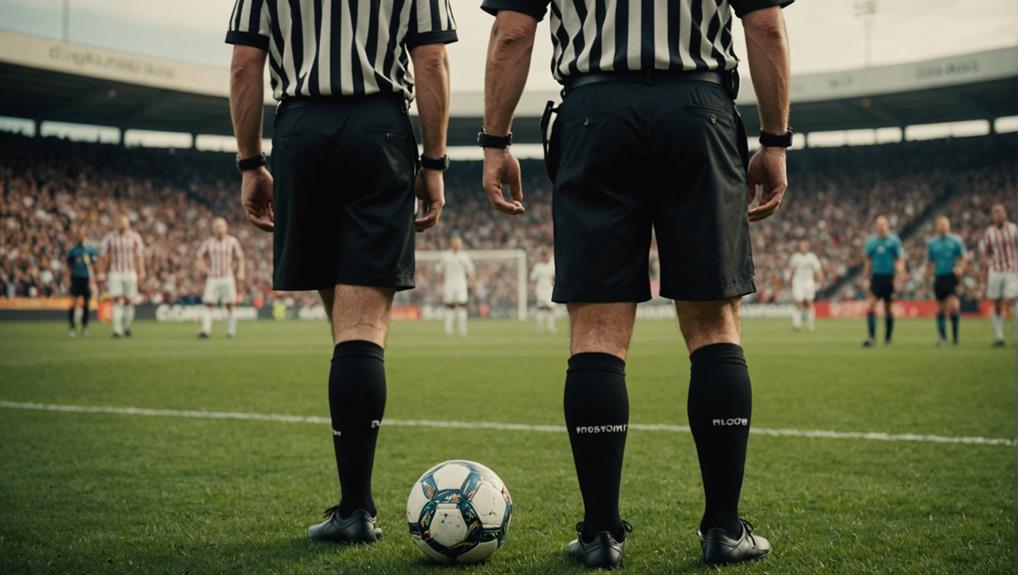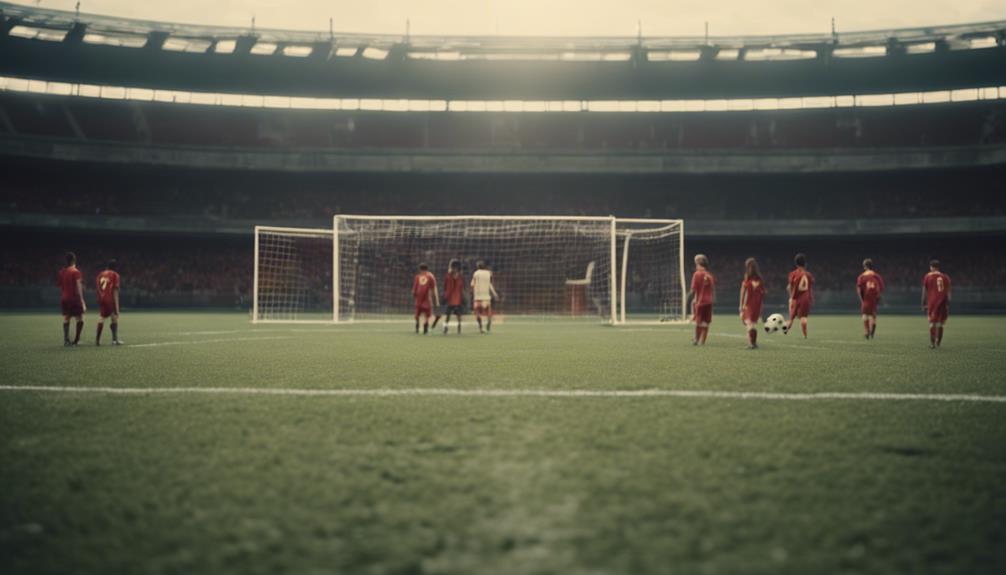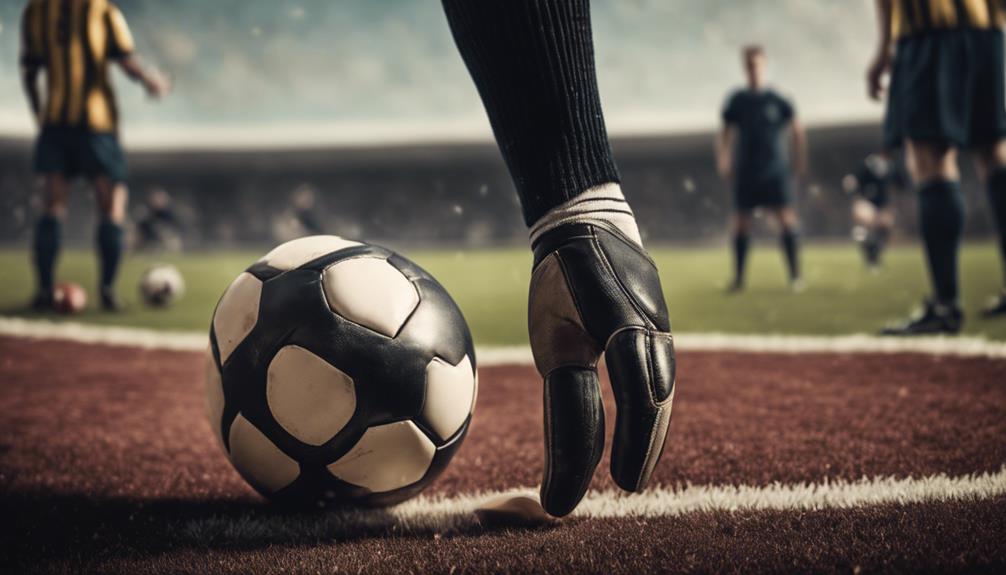
Kickoff Rules in Soccer: Everything You Need to Know
July 14, 2024In soccer, kickoff guidelines are essential for starting the game right. Place the ball at the center spot for kickoff. Players, except the kicker, stay outside the center circle. Teams decide sides through a coin toss. Follow these guidelines for a fair match. Want to know more about strategic positioning, coordination techniques, and handling the ball at kickoff? Understanding these aspects can give you an edge on the field. And don't forget the coin toss significance and restarting play after a goal. Master these rules for a winning advantage in each match.
Importance of Kickoff Rules
Understanding the importance of kickoff rules is vital for setting the tone and gaining an advantage at the start of a soccer game. As a player, knowing the kickoff rules allows your team to begin the match with possession of the ball, presenting strategic opportunities to dictate play early on.
By following these rules meticulously, you guarantee fair play and uphold the integrity of the game as outlined by IFAB regulations. Proper execution of kickoff rules not only grants your team the advantage of starting with the ball but also creates scenarios where you can control possession and initiate attacking plays right from the first whistle.
With a solid grasp of these rules, you can position yourself strategically, place the ball precisely, and kick off the game effectively, setting the stage for your team's success throughout the match.
FIFA and IFAB Regulations
FIFA and IFAB regulations dictate the rules for kickoffs in soccer games. These regulations guarantee fair play and consistency in how kickoffs are conducted.
Here are some key points to remember about FIFA and IFAB regulations for kickoffs:
- Kickoff Location: Kickoffs take place at the center spot of the center circle on the halfway line of the field.
- Player Positioning: All players, with the exception of the kicker, must remain outside the center circle during the kickoff.
- Determining Kickoff Team: The team that starts with the kickoff and which side of the field each team plays on is determined by a coin toss.
- Halftime Switch: Teams switch sides of the field after halftime, following the kickoff rules set by FIFA and IFAB.
Positioning on the Field

When setting up for a kickoff in soccer, knowing strategic starting positions and team coordination techniques can give you an advantage. Proper positioning can help your team quickly shift from defense to offense or vice versa.
Coordination among teammates is key to executing plays effectively right from the start.
Strategic Starting Positions
To maximize your team's effectiveness during a kickoff in soccer, strategic starting positions play an essential role in setting the tone for the game. Proper positioning can provide an advantage in possession and help in executing offensive or defensive strategies.
Here are some key points to ponder when setting up your team's starting positions:
- Maintain Proper Spacing: Ponder players are strategically spread out across the field to cover both defensive and offensive areas effectively.
- Reflect Player Roles: Position players based on their strengths and roles within the team. For example, place faster players near the sidelines for quick runs.
- Create Passing Options: Establish passing lanes by positioning players in a way that allows for quick ball movement and retention of possession.
- Anticipate Opponent's Moves: Analyze the opponent's starting positions to counter their strategy effectively and gain an early advantage in the game.
Team Coordination Techniques
Effective team coordination techniques are pivotal for strategically positioning players on the field during kickoffs in soccer. Proper coordination is essential for executing effective offensive and defensive strategies. When setting up players, consider offensive strategies to exploit space and create opportunities. By strategically positioning your team members, you can set the stage for successful attacking tactics during kickoffs.
During kickoffs, make sure that your players are positioned thoughtfully to maximize the team's chances of gaining possession and advancing towards the opponent's goal. Proper coordination helps in swiftly changing from defense to offense or vice versa, depending on the team's strategy.
Coin Toss Determination
You must understand the importance of the coin toss in soccer.
The captain's decision-making skills come into play during this pivotal moment.
Their choice can set the tone for the entire match.
Coin Toss Importance
The significance of the coin toss in soccer kickoff lies in determining which team gains the advantage of choosing possession or goal orientation. Winning the coin toss can greatly impact the team strategy, the flow of the game, and ultimately the match outcome. Here's why the coin toss is pivotal:
- Team Strategy: The coin toss winner can decide whether to possess the ball first or choose which goal to defend, shaping their initial approach to the game.
- Advantage: Having the choice of possession or goal orientation gives the winning team an advantage from the very start of the match.
- Game Influence: The outcome of the coin toss influences the entire game by dictating which team takes the initial kick and the side they play on.
- Match Outcome: The coin toss can set the tone for the entire match, impacting momentum and early scoring opportunities that can shape the final result.
Captain's Decision Making
During the coin toss before kickoff, the captain's decision-making plays an essential role in determining the initial advantage for their team. The captain, through the coin toss, has the option to choose between taking the kickoff or selecting which goal to attack. This decision not only influences possession but also sets the tone for the team's approach and game strategy.
The team that doesn't win the coin toss gets to decide which goal to defend, based on the captain's choice. By making a strategic decision during the coin toss, the captain can impact the team's goal preference and how they plan to play the game. Ultimately, the captain's role in setting the initial advantage through the coin toss is pivotal in shaping the team's approach and strategy for the upcoming match.
Handling the Ball at Kickoff

Evolution in soccer rules has refined the regulations surrounding ball handling during kickoff. When it comes to handling the ball at kickoff, there are specific rules you need to be aware of:
- No Double Touch: Players aren't allowed to touch the ball again until another player does after the kickoff.
- Indirect Free Kick: Touching the ball twice during the kickoff procedure results in an indirect free kick for the opposing team.
- Handball Offense: Committing a handball offense during kickoff can lead to a direct free kick for the opponents.
- Kickoff Infringements: Specific infringements related to ball handling during kickoff can result in a retake of the kickoff.
Understanding and following these ball handling rules during kickoff are essential to avoid penalties and maintain fair play on the field. Stay informed about the changes that have occurred over the years (2016, 2017, and 2019) to make sure you're up to date with the latest regulations.
Player Restrictions and Actions
Player conduct regulations during a soccer kickoff dictate specific restrictions and actions to guarantee fair play and adherence to the rules. When setting up for a kickoff, players, except the designated kicker, must remain in their own half of the field. Opponents must also keep a distance of at least 10 yards from the ball until it's in play to prevent any unfair advantage. The ball itself must be placed stationary on the center mark before the kick is taken.
Notably, scoring directly from a kickoff is permissible if the ball crosses into the opposing team's goal without any other player touching it. However, the kicker isn't allowed to touch the ball again until another player from either team has made contact with it.
These regulations aim to maintain fairness and sportsmanship during the kickoff phase of the game.
Restarting Play After a Goal

After a goal is scored in a soccer match, the restart options include a kickoff, throw-in, goal kick, or corner kick.
Here's what you need to know about restarting play after a goal:
- Opponents Restart Play: Following a goal, the opponents resume play. This guarantees fairness and allows the game to continue promptly.
- Directly Scored Goals: A goal scored directly from a restart, such as a corner kick or goal kick, counts towards the team's score. This showcases the skill and strategy involved in these set-piece opportunities.
- Unchanged Restart: If an offense occurs when the ball isn't in play, the restart method remains unchanged after a goal. Consistency in applying the rules maintains the integrity of the game.
- Various Restart Methods: Different restart methods are employed based on the situation following a goal in soccer. Understanding these methods adds depth to the game and keeps players and fans engaged in the match.
Conclusion
So, now you know the ins and outs of kickoff rules in soccer.
Remember, the kickoff is like the opening act of a play, setting the stage for the game ahead.
Make sure you're in the right position, follow the regulations, and get ready to kick things off in style!


